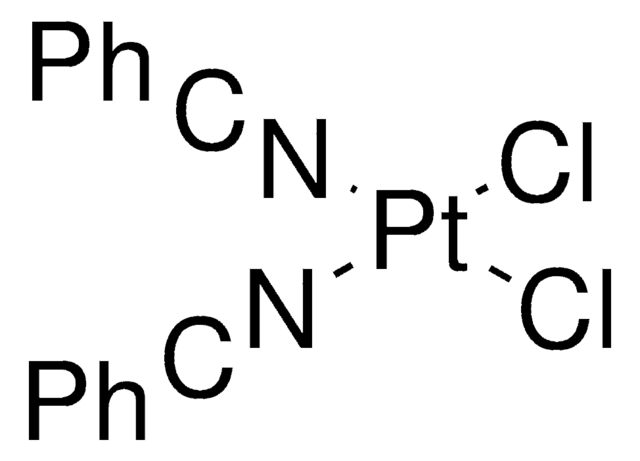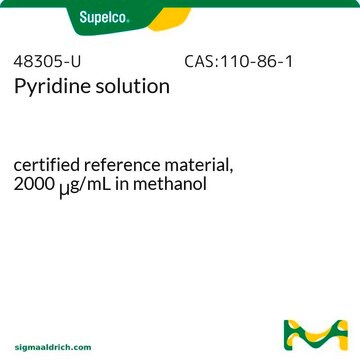P57506
Pyridine
ReagentPlus®, ≥99%
About This Item
20 mmHg ( 25 °C)
Productos recomendados
densidad de vapor
2.72 (vs air)
Nivel de calidad
presión de vapor
10 mmHg ( 13.2 °C)
20 mmHg ( 25 °C)
Línea del producto
ReagentPlus®
Ensayo
≥99%
Formulario
liquid
temp. de autoignición
899 °F
lim. expl.
12.4 %
impurezas
≤0.1% water (Karl Fischer)
índice de refracción
n20/D 1.509 (lit.)
pH
8.5 (25 °C, 15.82 g/L)
bp
115 °C (lit.)
mp
−42 °C (lit.)
densidad
0.978 g/mL at 25 °C (lit.)
cadena SMILES
C1=CN=CC=C1
InChI
1S/C5H5N/c1-2-4-6-5-3-1/h1-5H
Clave InChI
JUJWROOIHBZHMG-UHFFFAOYSA-N
¿Está buscando productos similares? Visita Guía de comparación de productos
Descripción general
Aplicación
- To synthesize glycophospholipids and phosphate diesters or phosphonate monoesters in the presence of trichloroacetonitrile as an activating reagent.
- In Knoevenagel condensation reactions.
- In the TEMPO-mediated radical polymerization of 3-vinylpyridine.
Información legal
Palabra de señalización
Danger
Frases de peligro
Clasificaciones de peligro
Acute Tox. 4 Dermal - Acute Tox. 4 Inhalation - Acute Tox. 4 Oral - Eye Irrit. 2 - Flam. Liq. 2 - Skin Irrit. 2
Código de clase de almacenamiento
3 - Flammable liquids
Clase de riesgo para el agua (WGK)
WGK 2
Punto de inflamabilidad (°F)
68.0 °F - closed cup
Punto de inflamabilidad (°C)
20 °C - closed cup
Elija entre una de las versiones más recientes:
¿Ya tiene este producto?
Encuentre la documentación para los productos que ha comprado recientemente en la Biblioteca de documentos.
Los clientes también vieron
Nuestro equipo de científicos tiene experiencia en todas las áreas de investigación: Ciencias de la vida, Ciencia de los materiales, Síntesis química, Cromatografía, Analítica y muchas otras.
Póngase en contacto con el Servicio técnico











